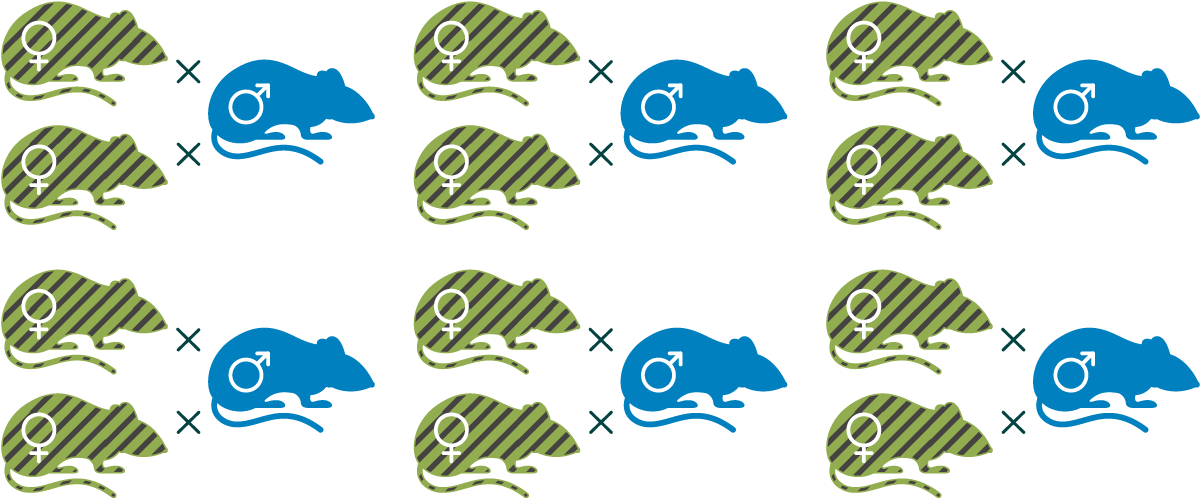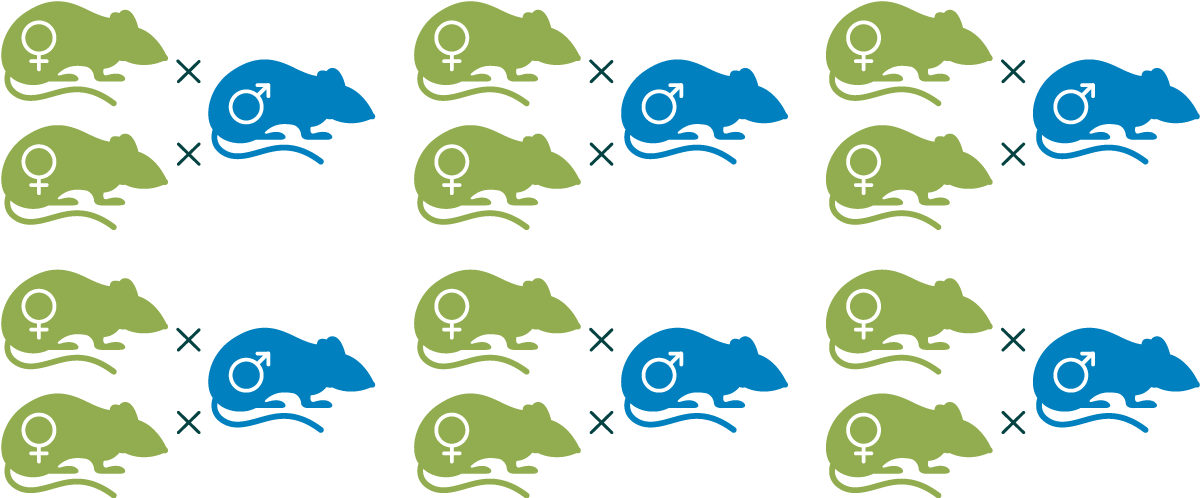Worked example of intermittent breeding
Intermittent breeding should be used instead of constant mating to avoid unnecessarily wastage of animals, whilst retaining the ability to breed an experimental cohort immediately. The use of intermittent breeding and the number of matings set up at each step will depend on the breeding performance of the strain (e.g. litter size, reproductive lifecycle, fertility etc.), for example, backcross colonies (both those that are congenic and those that are in the process of changing background and may not be congenic yet) can usually be held comfortably with intermittent breeding.
Below is a worked example describing an intermittent breeding strategy for keeping enough breeding stock available to produce six homozygous females, six homozygous males, six wild type females and six wild type males, using C57BL/6N breeding stock. To account for non-productive matings in this example, 12 females and six males will be needed for each step where matings are set up.
Step 1
For the first breeding step 12 wild type females (from a trusted supplier) and six heterozygous males are mated in trios to produce 12 litters of mixed genotypes. Males are removed when pregnancy is confirmed. Offspring are weaned and genotyped.

Step 2
From step 1 offspring 12 heterozygous females and six heterozygous males are retained for experiments, if required 12 wild type females are also retained for colony maintenance. Older holding stock and parents are culled.
Retained offspring stock is held until 12 - 18 weeks of age (this varies per strain but should be nearer the end of the reproductive lifecycle for the specific strain).

Step 3
Option 1 – Breed for an experimental cohort
If animals are required for an experimental cohort mate the 12 heterozygous females and six heterozygous males retained from step 2 in trios, removing the males once pregnancy is confirmed (these males can then be mated to wild type females to generate new breeding stock i.e. returned to step 1). Offspring will yield the required six homozygous females, six homozygous males, six wild type females and six wild type males for the experimental cohort.

Option 2 – Breed for colony maintenance
If animals are only required for colony maintenance, six heterozygous males from step 2 can be returned to step 1 and mated to 12 wild type females to generate new breeding stock.
Step 4
Males from step 3 return to step 1 to continue intermittent breeding with wild type females (either those retained at step 2, appropriate females from the animal facility colony, or new females from a trusted supplier when backcrossing).
Breeding and colony management
Email advice for answers to more specific questions about colony management or breeding difficult strains.

